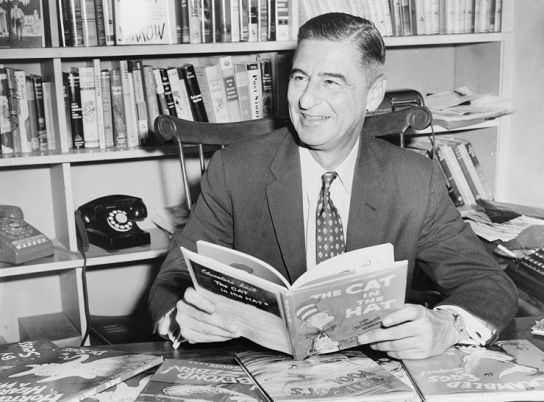By Amy Van Veen (The Cascade) – Email
Print Edition: February 27, 2013
“After all, a person’s a person no matter how small.”
And there it is – the lump in my throat that I try to cover up while reading to my nieces and nephews. I don’t want them to give me a wary look like when I started to get teary at that point in The Lorax when the Onceler realizes the importance of the word “unless.”
“Now that you’re here, the word of the Lorax seems perfectly clear. UNLESS someone like you cares a whole awful lot, nothing is going to get better. It’s not.” True that, Dr. Seuss! True that.
Reading his books as an adult kills me.
Not all of Seuss’s books are inspirational, it should be noted. I mean The Cat in the Hat may be fun for kids, but for adults it’s a nightmare – teaching kids that it’s okay to mess about as long as you clean everything up before mom gets home? Not exactly ideal. But learning that even the Grinch can find out what Christmas is really about? Priceless.
As a kid I loved Dr. Seuss with his weird words and that oh-so-Seussian rhythm of reading. But pre-adolescent me didn’t get why it was so important to understand the places I’d go. I liked reading “And will you succeed? Yes! You will, indeed! (98 and three-quarter per cent guaranteed.)” I didn’t like those lines because they gave me hope for my uncertain future past a BA. I liked those lines because they rhymed. It was simple. And easy. And just the level of random a child can appreciate.
Certainly it’s easy to look back and scoff at the obvious messages that come out between the ridiculous rhymes. It’s easy to look at Horton Hears a Who and think, “Really, Dr. Seuss? Could you hammer home that message that every voice needs to be heard any more? Or was your only tool a narrative sledgehammer?” It’s just as easy to look at The Lorax and roll our eyes at the glaringly obvious environmental message being taught. And with recent movie adaptations of his most beloved tales coming out, we roll our eyes all over again.
But since when does subtlety work with children? For that matter, when does subtlety work with adults? There’s a reason some of his books, written over 50 years ago, still strike chords with children and adults today. The issues he raises in some of these books are things that are inherent to the human experience. Granted, some of the language may be a little outdated (like when he calls Jo-Jo in Horton Hears a Who a “young twerp”) and some of his books are so outside of our realm of understanding that they’re just straight-up offensive (has anyone heard of his book The Pocket Book of Boners published in 1931 when a “boner” was a blooper or a mistake).
For those who think they can make it through the entirety of the likes of The Lorax, Horton Hears a Who and Oh! The Places You’ll Go, I challenge you. I challenge you to sit down and read the story at a child’s pace – not at a university student’s pace we’ve learned from skimming textbooks and scholarly articles. At the pace you used to want your parents and teachers to read at. A pace slow enough where you can follow each word and look at everything the illustrations depict. And if page-by-page you don’t get caught up in the mistakes of the Onceler or the intolerance of sour kangaroo and her black-bottomed eagle cohort to the point where all the feels push at your tear ducts then I suppose your heart may just be three sizes too small.



